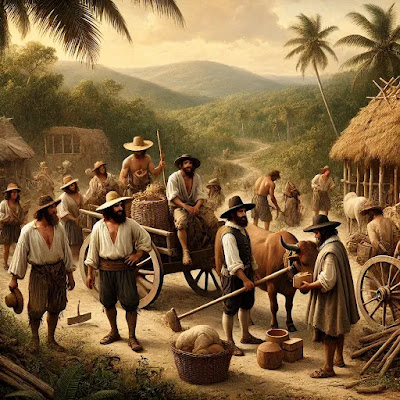As we mark the 331st anniversary of the founding of Matanzas, it’s an ideal moment to look back on the rich history of this beautiful city. On October 12, 1693, the city of San Carlos and San Severino de Matanzas was officially founded, a project that symbolized both the aspirations of a young colony and the harsh realities of life in the Caribbean during the late 17th century.
The Journey Begins
It all started a few months earlier, but the official precession began on October 9, 1693, when Governor Severino de Manzaneda and his delegation departed from Havana on its way to the bay of Matanzas. Their mission was to establish a fortified settlement that would not only defend the northern coast of Cuba but also support its economic and social development. The delegation, comprised of officials, military personnel, and families from the Canary Islands, reached the bay of Matanzas—a site carefully selected for its strategic importance.
This wasn’t just any settlement. The governor had chosen several dozen families from the Canary Islands, whose labor and determination would be the backbone of this new community. By May of that same year, these families had already begun to prepare the land, sow crops, and lay the groundwork for what would centuries later become a bustling city.
Building a New Future
The formal foundation of the city took place on October 12, 1693, when the first church was blessed and the city’s name was bestowed in honor of King Charles II of Spain (San Carlos) and the settlement's strategic fortress (San Severino). The events of those days, meticulously recorded in the city’s first official documents, show just how carefully the foundation was planned. From the construction of fortifications to the allocation of land to the settlers, no detail was left to chance.
The city was laid out with precision, with the Plaza de Armas (now known as Plaza de la Vigía) at its heart. Streets were carefully measured, and lots were distributed to the settlers. The first church was constructed on land facing the turquoise waters of the bay, and nearby, a fortification began to rise to defend against potential pirate attacks and foreign invasions.
Struggles and Triumphs
Life in Matanzas was anything but easy for those early settlers. The humid tropical climate, the threat of hurricanes, and outbreaks of diseases like smallpox and measles were constant challenges. Yet, through their perseverance and a bit of good luck, the city slowly grew.
Not only did they have to contend with natural threats, but also political pressures. Manzaneda’s correspondence with the Spanish Crown reveals his careful balancing act between ensuring the safety of the settlement and meeting the demands placed on him by royal decrees and all the treasonous mutiny that grew against his power on the governorship of the island.
A Lasting Legacy
Today, Matanzas is often called the "City of Bridges" or the "Athens of Cuba" because of its rich cultural history. But it’s important to remember its beginnings—those early days when a group of determined families, guided by faith and resilience, carved out a life on the edge of the Caribbean. The fortifications of San Severino, the carefully planned streets, and the first church that still stands as a symbol of the city’s origins, all remind us of that momentous foundation.
As we celebrate 331 years of Matanzas, we honor not just the historical figures who laid its first stones, but the countless men and women who built the city's enduring legacy. From its colonial roots to its modern role as a center of Cuban culture, Matanzas continues to be a testament to the strength and spirit of its people.



No comments:
Post a Comment